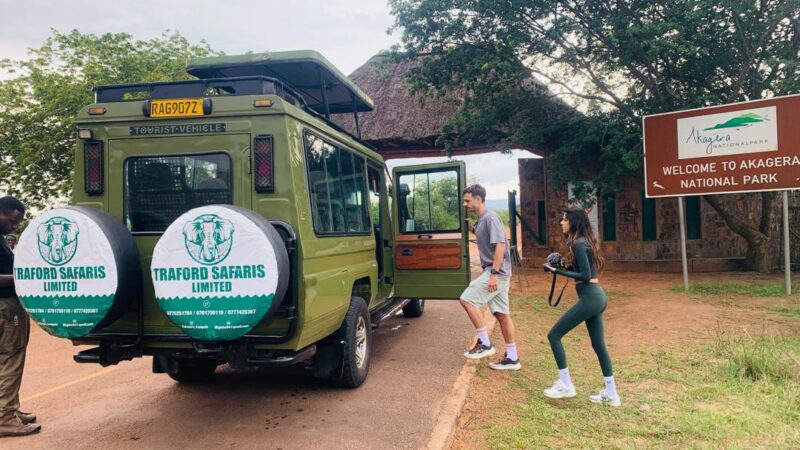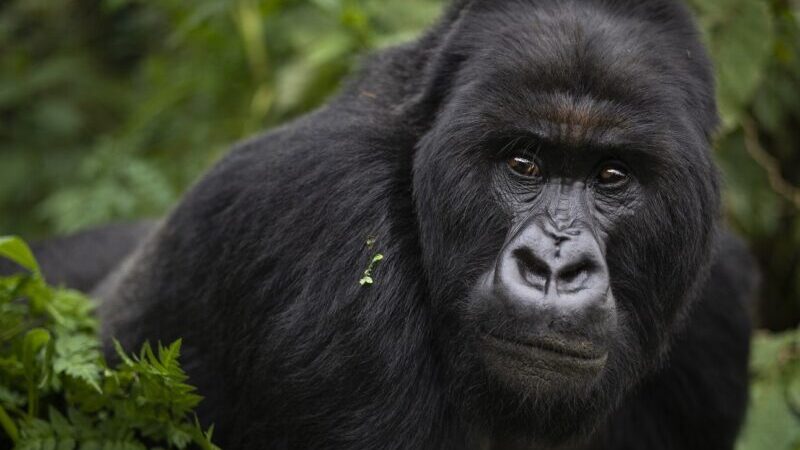
How Traford Supports Conservation & Community Projects
June 24, 2025
East Africa’s Traditional Fashion Tours
June 26, 2025As the world becomes increasingly conscious of climate change, wildlife conservation, and cultural preservation, a new kind of travel is gaining momentum nature first tourism. In 2025, East Africa has emerged as the leading destination for eco conscious explorers seeking deeper, more sustainable encounters with the natural world.
From lush mountain forests and open savannahs to conservation driven safaris and off-the-beaten-path parks, East Africa offers a unique blend of adventure, authenticity, and ecological responsibility. Here’s why this region is topping the bucket lists of mindful travelers in 2025.
1. Eco Safaris That Make a Difference
The traditional safari is evolving. In place of quick game drives and luxury only experiences, eco safaris are rising in popularity designed to protect wildlife, reduce environmental impact, and support local communities.
Kenya, Tanzania, Uganda, and Rwanda are all leading the charge in sustainable tourism with:
-
Community owned conservancies like Kenya’s Ol Pejeta and Tanzania’s Enduimet Wildlife Management Area
-
Low impact lodges powered by solar energy and built using eco friendly materials
-
Permit-based wildlife encounters that fund conservation, such as gorilla and chimpanzee trekking
Travelers can now enjoy unforgettable wildlife experiences while contributing directly to the protection of endangered species and fragile ecosystems.
2. Embracing the Slow Travel Movement
In 2025, more visitors are choosing to travel slowly spending longer in fewer places to truly connect with nature and local culture. This approach not only enhances personal experiences but also benefits the environment by reducing carbon emissions and overtourism.
Some of the best slow travel experiences in East Africa include:
-
Spending a week in Rwanda’s Nyungwe Forest, hiking through ancient rainforests, observing primates, and learning about biodiversity research
-
Camping in Uganda’s Pian Upe Wildlife Reserve, watching the stars from the savannah and exploring untouched landscapes far from the usual tourist routes
-
Relaxing by Lake Bunyonyi, where visitors can kayak between islands, birdwatch, and engage with local communities
These journeys offer tranquility, depth, and a more personal understanding of East Africa’s natural heritage.
3. National Parks on the Rise
While iconic parks like the Serengeti and Maasai Mara remain popular, lesser known parks are gaining attention for their wild beauty, fewer crowds, and conservation efforts. In 2025, three standouts are making waves:
Nyungwe Forest National Park, Rwanda
One of Africa’s most ancient forests, Nyungwe is a biodiversity hotspot with:
-
Over 300 bird species and 13 primate species, including chimpanzees
-
A breathtaking canopy walkway suspended above the forest
-
Strong conservation management and high eco-tourism standards
Mkomazi National Park, Tanzania
Located on the border with Kenya, Mkomazi offers:

Mkomazi National Park
-
A rare chance to see black rhinos and African wild dogs in protected sanctuaries
-
Sweeping landscapes framed by the Pare and Usambara mountains
-
Quiet game drives and guided walks far from mainstream routes
Pian Upe Wildlife Reserve, Uganda

Nature walks & hiking in Pian Upe Game Reserve
Uganda’s second-largest conservation area is gaining popularity for its:
-
Authentic wilderness experiences and the chance to see cheetahs, hyenas, and eland
-
Stunning views of Mount Napak and Karamoja’s rolling plains
-
Opportunities to camp, hike, and interact with the Karamojong communities
These destinations offer a raw, immersive alternative to crowded safari circuits.
4. Conservation Meets Culture
In East Africa, nature and culture are deeply intertwined. A nature-first safari often includes meaningful interactions with local people who live alongside wildlife and are active stewards of the land.
In 2025, travelers can:
-
Join women led tourism initiatives in northern Tanzania and western Uganda
-
Support artisan cooperatives and cultural centers in places like Kigali, Jinja, and Arusha
-
Participate in community-led wildlife projects, such as anti-poaching patrols or reforestation efforts
These experiences create a fuller picture of East African where conservation is not just about wildlife, but also about people and traditions.
5. Easier, More Responsible Travel
Eco-travel no longer means sacrificing comfort or convenience. In 2025, the region is well equipped for sustainable tourism, thanks to:
-
Improved infrastructure, including regional flights, smooth road networks, and digital bookings
-
Visa on arrival or eVisa systems in countries like Kenya, Uganda, and Rwanda
-
Tour operators like Traford Safaris Ltd, who offer expertly curated itineraries focused on ethical wildlife experiences, low impact lodging, and cultural immersion
Whether you’re visiting for a weekend getaway or a multi week expedition, East Africa makes it easy to travel responsibly.
Final Thoughts: Why Now?
The world is changing, and travelers are seeking destinations that align with their values. East Africa has responded not with mass tourism or overdevelopment, but with thoughtful, sustainable growth that protects what matters most.
From misty forests echoing with chimpanzee calls to vast plains where lions roam free, East Africa in 2025 offers something deeper: a chance to reconnect with nature, support conservation, and travel with purpose.
If you’re looking for more than just a holiday, East Africa is ready to welcome you with wild beauty, open hearts, and a future focused approach to tourism.
Explore East Africa the responsible way.
📩 Contact Traford Safaris Ltd to plan your nature first safari experience today.




